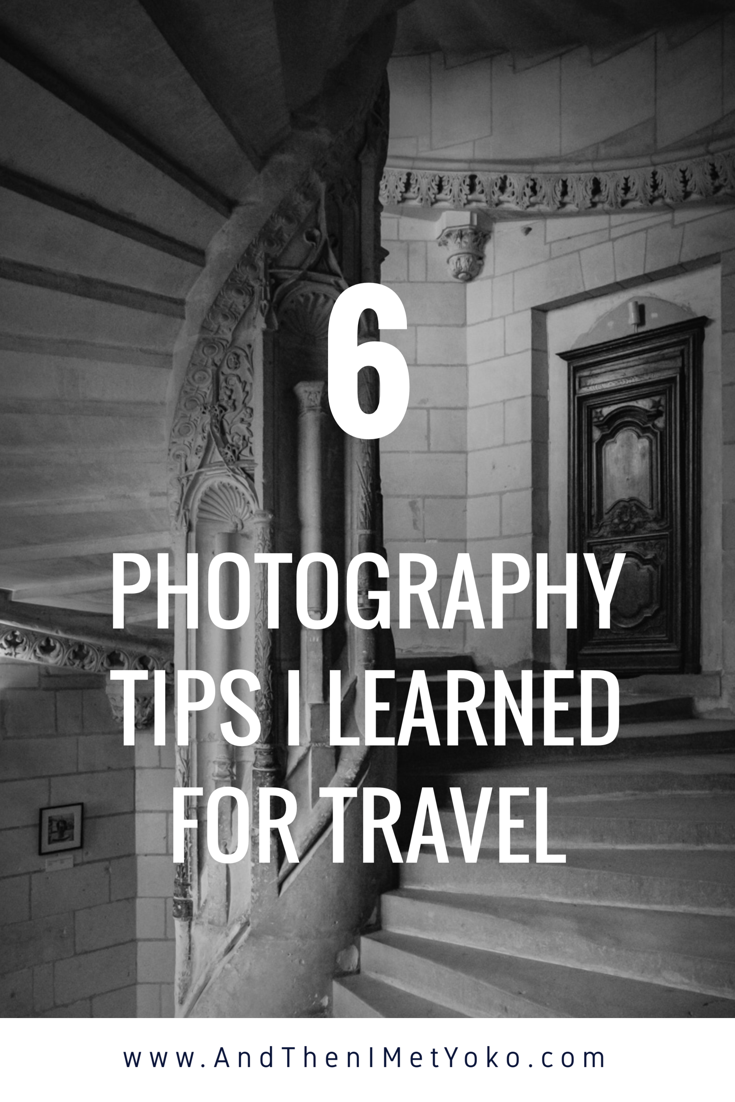Improve your photos with these 6 simple tips for architecture photography
Back in my guide to the Loire Valley I talked about my experience at La Perluette, a charming B&B in the city of Blois. The hosts Dominique and Georges were helpful in planning our stay in the Loire Valley region.
Here I'm going to talk about Monsieur Georges in particular and his love for photography. As an avid photographer and teacher he was quick to grab my camera and critique my work. We had an understanding of our relationship from the beginning. He was the teacher, and I the student.
And while his critiques were many and his praises few, he always gave very purposeful feedback which I found myself trying out the following day. I was desperate for his approval.
After my stay at La Perluette, I have 6 photography tips that Monsieur Georges passed to me and I'll pass along to you. Take them as suggestions and remember, photography is always about your own expression so follow your vision, even if it means not following the tips of others.
1. Learn how to take beautiful shots of ugly
Anyone can take that postcard picture. You know the one that you see in all the pamphlets. And while there's nothing wrong with that, Monsieur Georges made a point to say that real photographers know how to capture the beauty in the ugly.
I tried this the next day. While I was out exploring the beautiful Château de Chambord I noticed a man working on the restoration, something photographers like to crop out of photos. Well I loved his red shirt and yellow bucket. And while scaffolding may not be the most beautiful thing visually, it shows the people that love and work to maintain these pieces of history - which in my opinion is incredibly beautiful.
2. Blue Hour is great & Plan your timinG
This may seem like an obvious one, but hear me out. We are often obsessed with making sure we are at a scene for golden hour. And don't get me wrong, golden hour makes for some stunning photography, but I often over look blue hour. By the time I finished with sunset, I have no idea where to go or what to do for that period when the sky lights up blue.
Monsieur Georges told me, that's a mistake. Blue hour should be a priority and you need to plan it perfectly. So how to do it? Find a scene that has artificial lighting (cityscapes, or monuments with lights are great examples). About 20 minutes after the sun sets, start shooting. Set your camera to a small aperture to get detailed starbursts from the lights and a slow shutter-speed to get enough light into the scene. This means tripods are necessary.
Most importantly, make sure you plan your timing. I looked up sun set and driving distances and planned to be at the Château de Chambord for golden hour then drive 20 minutes to the city of Blois for blue hour.
Your results can be breathtaking when you consider that these were both shot within 1 hour of each other:
The Château de Chambord at the end of Golden Hour
The city of Blois during Blue Hour
3. Use lines to draw your eye into the subject
This one takes time to figure out (I'm still struggling) but you basically want to use lines to guide someone's eye into the subject. Often there's a lot going on in a scene, what do we want people to focus on? Lines, whether its a path, road, coastline or river all help lead the eye in the right direction.
These are two shots I did. Monsieur Georges wasn't a fan of the first and preferred the second because the river in the foreground provides a line into the scene.
Without using the river as a line
Using the river as a line to draw your eye into the scene
4. Have spiral stairs end on the corner
This is particularly useful in places like the Loire Valley, when you're doing lots of architecture photography. When you're shooting a spiral staircase you want to make sure you're getting enough of the staircase and that your eye is led off the spiral into the corner of the photograph.
Below are two shots I made. The first is tight, while the second shows more of the stairs and the bottom isn't cropped so your eye is led out of the corner.
5. Empty blue sky is boring
The minimalist in me took this tip more as a suggestion because there are lots of times I really like an empty blue sky. Monsieur Georges' point had to do with composition. Though it would be preferential to have a sky with intrigue, like clouds or pretty colours, sometimes we are unlucky and the sky is giving us nothing. So consider different compositions.
Below is a scene I took with two different compositions. The first has a lot of blue sky. I was going for a minimalism approach with a tiny castle in the scene. But when I took a second photo, more zoomed in and in a portrait orientation it fills the frame better. Monsieur Georges may still argue there's too much blue sky but that's going to be an artistic difference ;)
The Château de Chaumont with an empty blue sky
The Château de Chaumont in a portrait composition
6. People in your picture Can Be good
This tip really depends on the shot you're going for, but generally speaking the more I shoot the more I'm enjoying people in my shot.
People show scale, interesting activities, emotions and sometimes I like to show large groups of people to show how busy a scene is. Yeah sometimes they can be annoying if you're trying to achieve a certain look and you've got people walking in and out of your frame, but otherwise consider working with people.
Below are two shots of the Château de Chenonceau. I went to this Château with the first picture in my mind. I so badly wanted to capture that reflection shot that you see in the pamphlets. And you know what, I got it. But I prefer the second photo, because the family in the little red canoe adds more interest to the scene.
So yeah, people; they can be good.
Château de Chenonceau
Château de Chenonceau with some people intrigue
When I started with this website I talked about Yoko and learning from her. Well the same is true for when I met Monsieur Georges. Travel is fantastic because you never know what you're going to learn from strangers.
Related Articles
Un Petit Mot pour Monsieur Georges
Alors, merci Monsieur Georges! J’ai appris beaucoup avec vous sur la technique et le style de photographie. J’ai grandi en tant que photographe et j’espère vous revoir bientôt et recevoir des compliments pour changer ;) Je vous remercie pour tous vos conseils et j’espère que vous avez apprécié le riche pourboire que j’ai laissé, le meilleur investissement de vie! Je vous dois toujours mes devoirs.






















Enjoy this travel guide Loire Valley itinerary. The Loire is a French region famous for stunning chateaux including Chaumont, Cheverny, Chenonceau & Chambord.